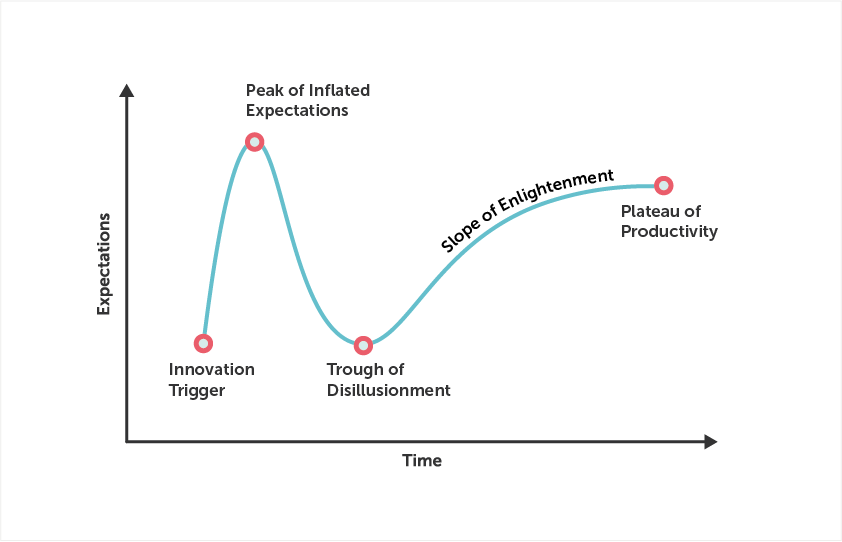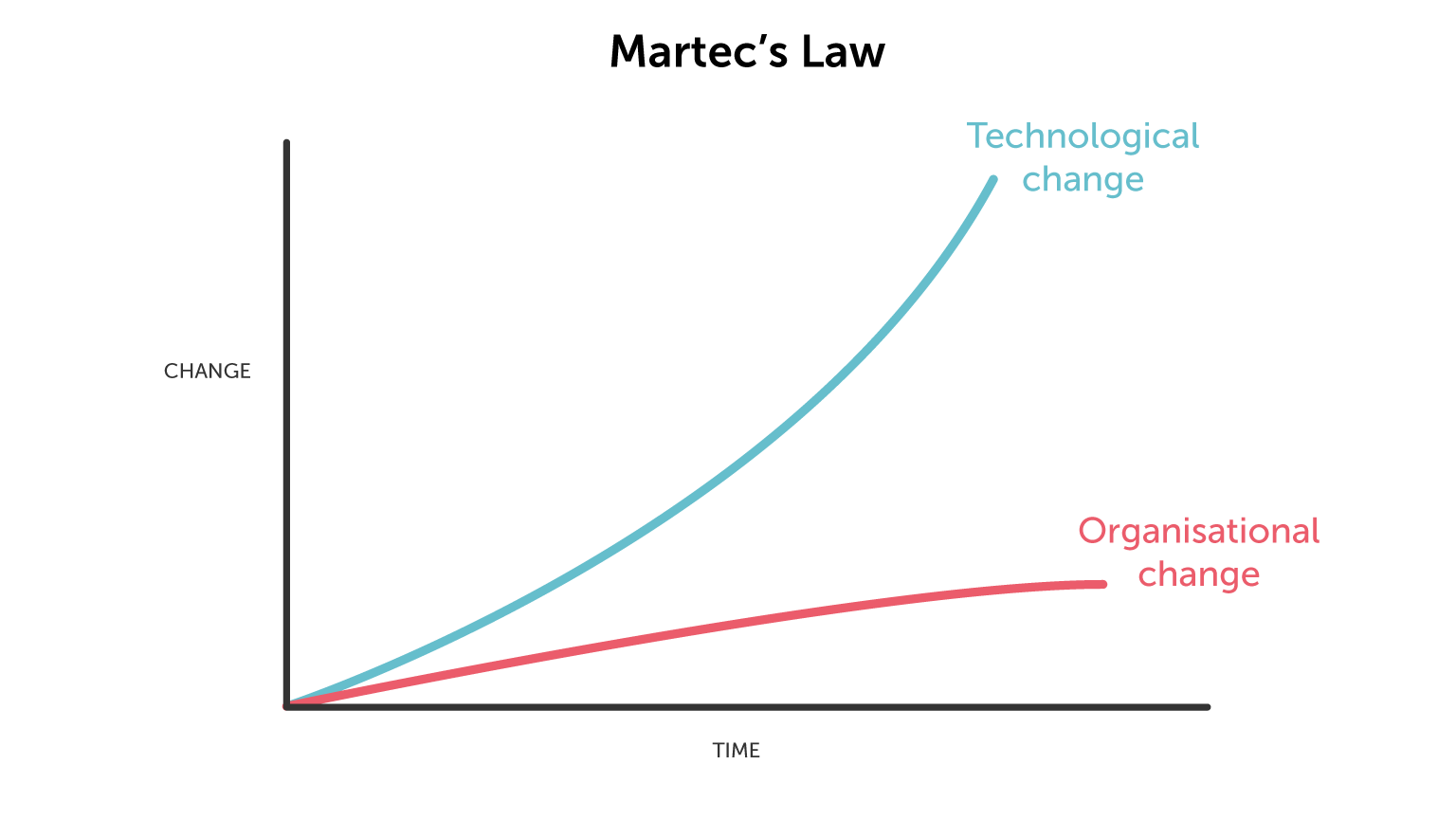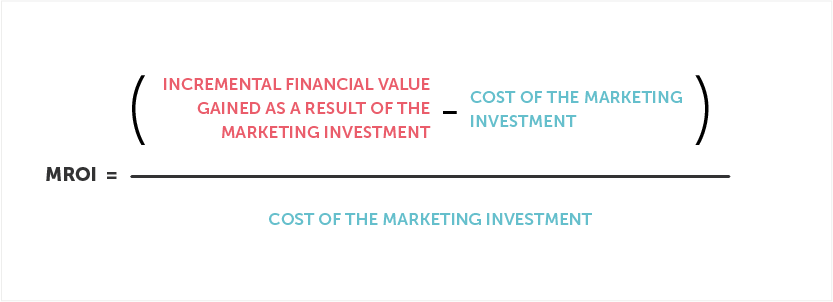LanguageWire
The global content company
LinkedIn
LanguageWire
The global content company
LinkedIn

Where next, CMO? Today’s top ten marketing challenges (2020)
The one thing marketers know for sure about change is that it’s constant. Interconnected shifts in the technological landscape and consumer behaviour are challenging businesses the world over. It’s the job of CMOs to navigate this ever-changing marketing environment. But what are the top challenges facing marketing teams today?
We’ve scoured the research for you and compiled a list of the top marketing challenges. Read on for an overview of topics like market uncertainty, accelerated digital transformation, automation, cyber security and tightening budgets.
There is no hiding from the COVID-19 pandemic. The virus and resulting lockdown have affected every corner of the business world with shut shops, increased unemployment, disrupted supply chains and reduced confidence.
Economies will bounce back as businesses reopen, kids go back to school and treatments and vaccines are discovered. The problem, in a business sense, is that we don’t know the recovery’s timeline or to what degree we will recover. It’s quite possible that we will be stuck at 90% for quite some time.
So, how do we market products in uncertain times and plan for a changed world once we come out the other side? That’s a big question with many different answers, depending on your sector and products.
McKinsey recently shared two helpful post-crisis trends for us to consider:
eCommerce adoption has accelerated across B2C and B2B. Is it easy for people to find you online? Is it easy for visitors to find what they want on your website or app? How you answer those two questions will define your online success or failure.
Many business services that were once enacted face-to-face are now being provided remotely. To enable this trend, we have accelerated our adoption of remote work solutions such as teleconferencing software, online collaboration tools and augmented reality.
Now is the time to be nimble and to consider the adoption of technology that helps remote teams communicate and collaborate effectively.
Technology is fundamentally transforming the way we live our lives. For brands, the accelerated digitisation of society has ended the traditional business playbook. Newcomers are afforded a tremendous opportunity to capture a larger market share. And poor old incumbents need to reinvent themselves for this new era.
Who leads the digital transformation of your company?
A) CEO
B) CTO
C) CMO
D) COVID-19
COVID-19 has accelerated our digital transformation path. As consumers, we have been forced to perform more tasks online. As businesses, we have had to make digital and low-touch interactions possible. And now that we’ve had a taste of the digital future, we will not automatically revert to the way we did things before COVID-19.
Rapid digital evolution makes it hard to keep your head above the surface of the deep digital ocean. Adaptability is vital for staying afloat. If you don’t build a team that can adapt, competitors will leapfrog you. Adaptability isn’t only important for humans, but the technology we use needs to be adaptable as well. Quick turnaround times, fewer bottlenecks, workflow automation and integration are mandatory.
Solutions:
The customer remains at the centre of what we do as marketers. But the more we do, the higher the expectations. So, are we delivering enough? That depends on who you ask. According to Accenture, only 7.0% of brands feel they offer a digital customer experience that exceeds expectations. On the other hand, 25% feel that they are behind, and 67% think that their customer experience is good enough.
”76% of executives agree that organisations need to dramatically reengineer the experiences that bring technology and people together in a more humancentric manner.”
Accenture Technology Vision 2020
Fortunately, CMOs recognise that continually improving the customer experience keeps brands competitive.
The good news is that we are moving along the marketing technology hype cycle. New technologies that improve customer experiences are available, and marketing teams are utilising them en masse.

Gartner Hipe Cycle (source: Gartner)
One powerful concept of this new age is omnichannel marketing. We can now deliver the right content, in the right language, at the right time, to the right person, across multiple touchpoints.
The challenge for marketing teams is the acquisition of usable data. Getting ahead and beating the competition requires data and insights into your target market. How is your content consumed? What content do visitors engage with on your website? How can you adjust your content to ensure that we deliver a positive UX? What do your customers find interesting? These are all questions that data can answer.
Solutions:
Modern marketers understand that relevance is hugely important. Why? Because when content is tailored to you, you’re more likely to pay attention to it. The decision of whether to engage with content only takes a couple of seconds. In fact, when it comes to engaging with content, people now have shorter attention spans than goldfish.
Personalisation provides the answer to this marketing challenge. According to McKinsey, ‘Personalisation can reduce acquisition costs by as much as 50 percent, lift revenues by 5 to 15 percent, and increase the efficiency of marketing spend by 10 to 30 percent.’
But how do you offer highly personalised experiences at scale? This is the crux of the challenge. There are numerous examples which can inspire personalisation.
The technology needed to deliver personal experiences is often complex and has a steep learning curve. Therefore, it’s important to hire the right team who has the necessary knowledge to capture data and utilises it to drive experiences. Once you have your team, give them the space to learn and develop their knowledge.
When it comes to product information management, consumers expect to find both basic and detailed product information, as well as contextual product content, all in their own languages and local currency. This requires a key understanding of local markets and native languages. This is no longer a ‘trend’, but an expectation driven by increased online shopping.
Solutions:
We are in the midst of a war. Behemoths like Google, Amazon, Facebook, Uber, Amazon, Apple and Microsoft are battling to win the artificial intelligence arms race. This relentless march towards automation will make many tasks obsolete.
This challenge also offers a massive opportunity. Professionals will have more time to focus on creative tasks, rather than repetitive manual routines. And brands that harness the power of AI today stand to be the winners tomorrow.
According to former Microsoft Windows CMO Thom Gruhler, all brands should focus on ‘…what you can pragmatically do with AI and machine learning to positively impact your customer experience and marketing.’
AI is no longer a dream of the future. Brands are already making use of its potential. For example, chatbots are helping brands communicate in the right place at the right time, utilising AI to answer questions via WhatsApp and Facebook Messenger. In the long run, every single brand will make use of AI.
Free white paper: Optimise Content Workflows with Machine Translation.
Are you struggling to create more content, in more languages, in less time, and at a lower cost? Read this handy guide on how to streamline your content workflows with Neural Machine Translation.
Solutions:
A common theme in many of the challenges facing marketing teams is technology. Namely, the need for marketers to understand and adapt to technological trends and developments. Unfortunately, this is not an easy task. The marketing technology (MarTech) landscape is extraordinarily complex.
Compared to 20 years ago, technological change has evolved marketing into a dynamic business function with diverse and expanding touchpoints and streams of data sources.
An important skill for a CMO is to understand the solutions available and identify the right partners to solve these technology-related challenges.
Solutions:
Bonus: Check out our overview of the translation technology landscape. Rapid change is the status quo for the language industry. This definitive guide will help you take advantage of the latest translation advances.
It’s a challenge for marketing departments to keep up with the rapid pace of technological change, let alone entire organisations. Back in 2013, Scott Brinker dubbed this as ‘Martec’s law’ whereby ‘Technology changes exponentially, but organisations change logarithmically.’

Martec’s law. Source: Scott Brinker - chiefmartech.com
Solutions:
The rapid pace of innovation has led to shorter product life cycles, more markets to address, and a lot of stress. Process optimisation is necessary for achieving time-to-market goals. CMOs need to do more with less and simultaneously rethink their go-to-market strategy. The risk of delaying time-to-market is too high. It can result in loss of market share and brand damage.
Agility is paramount in an age of instant change. Improving your team’s ability to react to new market conditions will improve your chances for success. Part of this effort is to remove as many roadblocks as possible and automate tasks. When creating multilingual content, if your team can order translations from within your CMS or PIM, you will save about 20 minutes per page of content. The time you save adds up, providing you with the ability to focus on other valuable and strategic tasks.
Solutions:
There are two kinds of enterprises in the world: those that have been hacked and those who don’t know they’ve been hacked yet. At least, that’s how the saying goes. What’s clear from this is that your data has value, and people will attack your business to try to get it.
However, malicious hackers compromising data is only half of the story. Businesses must comply with data privacy and security regulations, such as EU General Data Protection Regulation (GDPR) and the California Consumer Privacy Act (CCPA).
Ross Mason, founder of MuleSoft, has a great analogy for the problems brands face: ‘Imagine a house with many closed doors and windows that represent access to enterprise data. Over the years, people have likely opened up most of the windows, the back door and even dug tunnels to gain access. With all of these visible and hidden points of entry, it’s tough to lock down the data, understand who uses it, where they use it and where it goes when it leaves the four walls of the enterprise.’
Solutions:
As you may have already recognised, extra resources would help to solve many of the challenges CMOs face. Digital transformation, rapid technological change, data security, organisational change and attaining a shorter time-to-market all put strains on your budget and team. The year-on-year challenge is to show ROI so that you can optimise how you invest. Proving the ROI of your activities isn’t only helpful for taking decisions, but it is vital for maintaining a functioning marketing team.

A method for calculating marketing ROI. Source: HBR
We need to stop looking at marketing as an expense and justify it as an investment. This shift to prove marketing ROI makes sense. Being able to objectively compare investments aids the decision-making process. When requesting a budget, being able to say ‘every euro we put in gives 1.2 in return’ is a strong argument.
Solutions:
As you can see, the way forward for the CMO is not a walk in the park. Staying ahead of the pack requires continual improvement and effort. As described in this post, however, with some forward thinking, clarity of vision and cutting through various forms of complexity to evolve organisations, much can be achieved in the quest to keep your brand relevant.
Related content
How can we help you?
Your journey to a powerful, seamless language management experience starts here! Tell us about your needs and we will tailor the perfect solution to your enterprise.